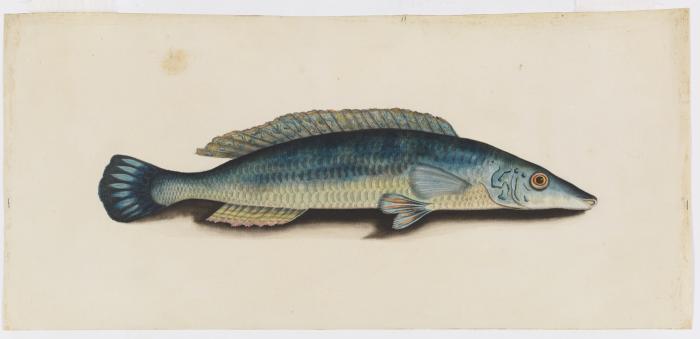Artists of the First Fleet
A lasting outcome of the arrival of the First Fleet was the artwork produced from the earliest days of settlement. These drawings depict Indigenous people and the Australian environment at the point of colonisation in 1788.
Many of the artists from the First Fleet were naval officers, such as William Bradley and George Raper, whose formal training included sketching and watercolour painting. Some artists remain unknown and may have included convicts.
William Bradley (1757?-1833)
It was part of a naval officer’s formal training to learn to draw coastal profiles, charts and views. With 29 watercolours inserted between its pages, the journal of First Lieutenant William Bradley contributes to the important artistic record of European settlement in Australia.
Bradley’s illustrations raise many questions. We can’t know if any of the drawings were painted while Bradley was in New South Wales, or later on his return to England. In general, their level of accuracy suggests that he was working from something other than recollection, however his depiction of the Fleet entering Port Jackson seems to portray Sydney’s North and South Heads in reverse.
Bradley’s illustrations are on several different types of paper, some watermarked, some not. All have been titled, and some have been initialled or dated. Some have been bound into his journal, others hinged in and perhaps, therefore, produced later.
George Raper (1768? - 1797)
Like William Bradley, Midshipman George Raper received naval training in drawing. Raper joined the Sirius as Able-Bodied Seaman and was promoted to Midshipman during the voyage to New South Wales. He made voyages to Cape Town and Norfolk Island before returning to England in 1792.
During his time away he produced an impressive number of watercolour works mainly of birds, flowers, fish and Aboriginal implements, coastal profiles and topographical views. The Library’s collections include botanical drawings and drawings of fish by Raper.
Stranded on Norfolk Island by the wrecking of the Sirius in March 1790, Raper recorded the Island’s settlements including two views of Arthur’s Vale.
Explore further George Raper's watercolours:
View of the West Side of Arthur's Vale, ca 1790s
View of the East Side of Arthur's Vale, ca 1790s
George Raper's Australian flowers
George Raper's Australian fishes
100 works by an artist, or artists, identified only as the Sydney Bird painter
Richard Pulteney
These drawings of Australian flora and fauna, some dated 1797, were owned by English botanist, Richard Pulteney. The artist is not known and the works may have been created in England.
Robert Anderson Seton
This album of watercolour drawings of Australian natural history was owned by Robert Anderson Seton and dates from around 1800. The album is comprised of copies of sketches from Governor John Hunter's sketchbook, 'Birds & Flowers of New South Wales drawn on the spot in 1788, 89 and 90'.
Arthur Bowes Smyth
Surgeon on the Lady Penryhn, Bowes Smyth’s journal contains 25 watercolour and pen and ink drawings. His drawings include the earliest extant illustration by a European of the emu. The earliest was possibly drawn by Lieutenant John Watts, also of the Lady Penrhyn, and was reproduced in Arthur Phillip's published account of the First Fleet. Watts’ original drawing is now lost.
Philip Gidley King
A series of five watercolour drawings of Indigenous people have been attributed to naval officer and future Governor, Philip Gidley King. It is known that King sketched but no signed works by him are known to exist.
Sponsors
Made possible through a partnership with John T Reid Charitable Trusts and Thyne Reid Foundation - UNESCO Memory of the World

